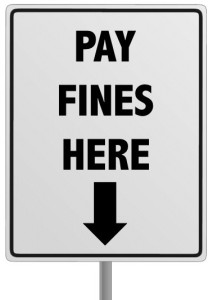It’s Only A Fine
Reading Time: 2 minutes.

One would expect fines In civil and criminal enforcement actions to bear some relationship to both the offensive conduct and the statute that authroizes the fine, but that’s rarely the case. Rather, they’re the product of strategy, tactics, raw power and solid horse-trading, as outlined by Professor Peter J. Henning: Fines, Without Explaining How They Were Calculated
In particular, Professor Henning notes:
For an individual, it is difficult to resist the broad authority granted to the S.E.C. to impose significant monetary penalties. For companies, the civil penalty is more a matter of how much they are willing to pay because limitations on the amount of a penalty seem to be largely irrelevant to the final settlement.
When JPMorgan paid a $200 million penalty to settle the S.E.C. case related to the London whale trading, it acknowledged violating the books-and-records provisions of the securities laws by not properly reporting the losses in its chief investment office. The bank lost over $6 billion from the transactions, something shareholders had to bear on top of the civil penalty.
It is difficult to see how the penalty relates to the statute authorizing a maximum penalty of $800,000 for each violation, especially when the case did not involve any claim of fraud or reckless conduct. JPMorgan was unwilling to fight the S.E.C., which described only a limited set of violations but still extracted a substantial penalty.
When the government agrees to a settlement imposing civil penalties on a company, the amount appears to have been reached through negotiation without any effort to explain how the payment was calculated. Of course, the beneficiary is often the United States Treasury because some penalties, like the $2 billion for the mortgage securities settlement, go straight to the government’s coffers.

The bounty aspect noted in the last sentence is a strong undercurrent. Where scalps help the agency budget, there’ll be more scalps.